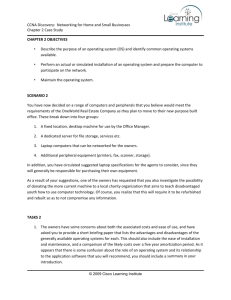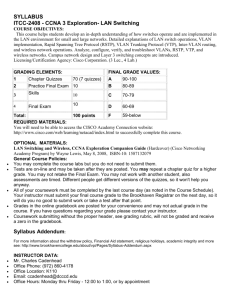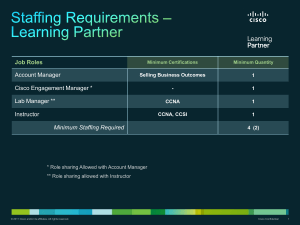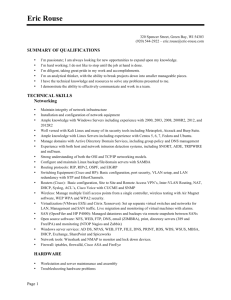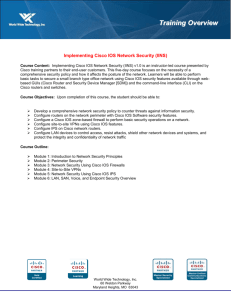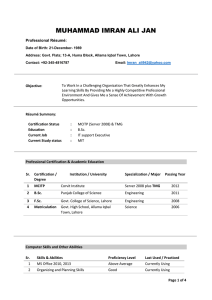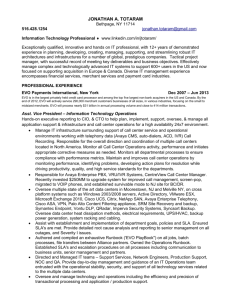CCNA Security Case Study: Network Security Implementation
advertisement
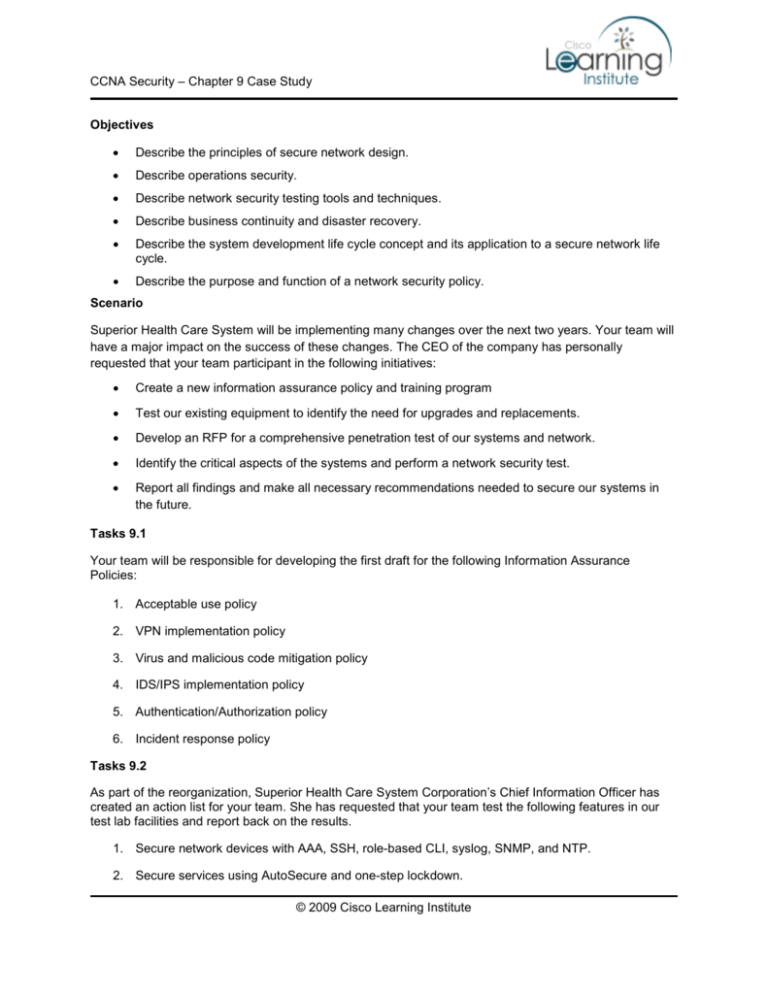
CCNA Security – Chapter 9 Case Study Objectives • Describe the principles of secure network design. • Describe operations security. • Describe network security testing tools and techniques. • Describe business continuity and disaster recovery. • Describe the system development life cycle concept and its application to a secure network life cycle. • Describe the purpose and function of a network security policy. Scenario Superior Health Care System will be implementing many changes over the next two years. Your team will have a major impact on the success of these changes. The CEO of the company has personally requested that your team participant in the following initiatives: • Create a new information assurance policy and training program • Test our existing equipment to identify the need for upgrades and replacements. • Develop an RFP for a comprehensive penetration test of our systems and network. • Identify the critical aspects of the systems and perform a network security test. • Report all findings and make all necessary recommendations needed to secure our systems in the future. Tasks 9.1 Your team will be responsible for developing the first draft for the following Information Assurance Policies: 1. Acceptable use policy 2. VPN implementation policy 3. Virus and malicious code mitigation policy 4. IDS/IPS implementation policy 5. Authentication/Authorization policy 6. Incident response policy Tasks 9.2 As part of the reorganization, Superior Health Care System Corporation’s Chief Information Officer has created an action list for your team. She has requested that your team test the following features in our test lab facilities and report back on the results. 1. Secure network devices with AAA, SSH, role-based CLI, syslog, SNMP, and NTP. 2. Secure services using AutoSecure and one-step lockdown. © 2009 Cisco Learning Institute CCNA Security – Chapter 9 Case Study 3. Protect network endpoints, such as workstations and servers, against viruses, Trojan Horses, and worms with Cisco NAC, Cisco IronPort, and Cisco Security Agent. 4. Use Cisco IOS Firewall and accompanying ACLs to secure resources internally while protecting those resources from outside attacks. 5. Supplement Cisco IOS Firewall with Cisco IPS technology to evaluate traffic using an attack signature database. 6. Protect the LAN by following Layer 2 and VLAN recommended practices and by using a variety of technologies, including BPDU guard, root guard, PortFast, and SPAN. Tasks 9.3 We would like you to draft a two page document detailing the framework and components of a corporate wide information assurance education, training and awareness program. Please provide examples and resources that support your proposal. Tasks 9.4 Our senior management team wants to make sure we have thoroughly tested and strengthened our systems and network. In an effort to respond to this priority, the Chief Information Assurance Officer has directed your team to compose an RFP to identify a company contracted to perform a penetration test on our systems and assist our staff in mitigating potential risk and vulnerabilities. Please have your team draft the document and make sure they include the following activities as part of the request: Internal/Intranet Testing • Clients, Servers • Databases • Switches • Routers • Intranet • Remote Management Hardware/Software • IDS - IPS • Patch Management • Virus/Spyware External/DMZ/Extranet • Web Sites • Database Mining • Mail Servers • Advanced E-Mail Tracking and Tracing © 2009 Cisco Learning Institute CCNA Security – Chapter 9 Case Study • DNS Servers • FTP Servers • VPN Servers • Wireless Networks • Firewalls Physical Security • Server Room • Back-up Media • Accessibility To Security Controls • Cabling, Physical Access • Key Loggers • Documentation • Lock Picking • Hot Jacks • Phone Systems • Covert Wireless Component/Stages of the Test 1. Establish the scope of the test 2. Planning the test with sign offs 3. Target acquisition 4. Network mapping 5. Fingerprinting 6. Enumeration 7. Vulnerability assessment 8. Vulnerability exploitation 9. Breakin 10. Privilege escalate 11. Hiding/Stealing data © 2009 Cisco Learning Institute CCNA Security – Chapter 9 Case Study 12. Planting backdoors 13. Covering Tracks 14. Test Result Analysis 15. Reporting 16. Post-Test consultation © 2009 Cisco Learning Institute


